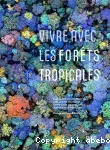Adresse
Infodoc : Réseau des bibliothèques et centres de documentation d'AgroParisTechFrance
contact

Détail de l'auteur
Auteur Plinio Sist |
Documents disponibles écrits par cet auteur (9)
 Ajouter le résultat dans votre panier Faire une suggestion Affiner la recherche Interroger des sources externes
Ajouter le résultat dans votre panier Faire une suggestion Affiner la recherche Interroger des sources externes
 Article
Article
 Article
ArticleHarvesting intensity versus sustainability in Indonesia.
in Array , Array, 01/01/1970

 Article
ArticleHervesting intensity versus sustainability in Indonesia.
in Forest ecology and management , Vol. 108 n° 3, 26/08/1998

 Article
ArticlePopulations rurales et préservation de la forêt amazonienne brésilienne
in Le Flamboyant , n° 66/67, 01/07/2010

 Tiré à part
Tiré à part
 Livre
Livre
 Livre
Livre978-85-7300-360-4318 p.
318 p.ISBN : 978-85-7300-360-4 
 Article
Article
 Livre
Livre978-2-37375-110-91 vol. (216 p.)
1 vol. (216 p.)ISBN : 978-2-37375-110-9




